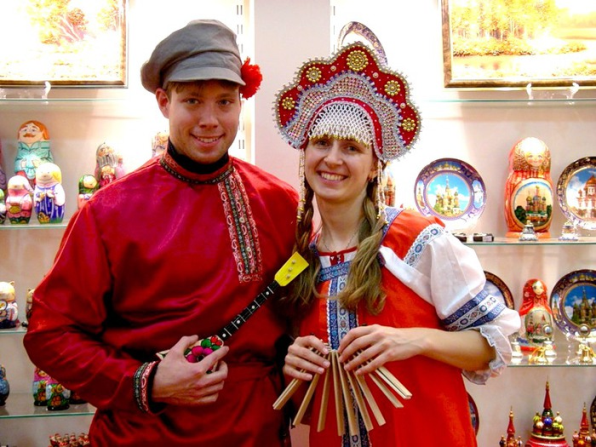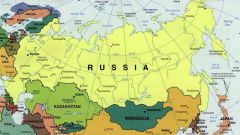Different ethnic groups living in area bordering Europe and Asia, made up of cultural and historical identity of Russia. Formation of the Russian state were Finno-Ugric, Eastern Slavic, Baltic and other small Nations, all, according to the Chronicles, more than 20 items. For many centuries, the Russian Empire expanded its borders at the expense of the border regions, the population of which became part of the Russian people.
The results of the latest census of the Russian Federation, conducted in 2010, on the territory of the state is home to 195 nationalities. The population can be classified along ethnic and linguistic lines. The separation affects the historical roots of the peoples, even if the modern indigenous population no longer speaks the language of their ancestors.
The representatives of Indo-European culture belong to the Slavic peoples - they are, in numerical terms, more than 14 million people living in Russia; this includes the Baltic, Germanic, romance, Greek, Armenian, Iranian, Indo-Aryan peoples.
Yukagir-Ural family gave rise to the Finns, Estonians, Karelian, Mordovians, Komi residents. From here came and Khanty (living in the Russian North more than 30 thousand people), Muncie (in Russia a little more than 12.5 thousand), Udmurts (552300 people), Chuvans and Yukaghirs.
The Altai branch, the representatives of which inhabit the Altai Republic and the bordering regions, divided into five families. It is the Koreans and the Japanese, the Mongols, and also among the Turkic and Manchu-Tungus nation. How many today on the territory of modern Russia there are representatives of these people, hard to say. According to the results of the last census, some of them identified themselves as "Russian" and, therefore, refused national identity.
North Caucasian nation gave the country a population which can be divided into 2 camps. It is the representatives of the North Caucasian and Abkhaz-Adyghean people. The first branches include: Dagestanis, Chechens, Ingush, Avars, lezgini and other minorities. The second branch: gabardine, Adyghes, Abkhazians and Circassians.
Modern Russia includes other small Nations, known only to scientists in the field of atosaki. This Austro-Asiatic, Sino-Tibetan, Afro-Asiatic, and paleo-Asiatic tribes. More than 10 thousand people, despite the Russian citizenship in 2010 identified themselves as Arabs, Bahrainis, Egyptians, Yukaghirs, Mauritanians, Sudanese, nahali, etc.
Despite the diversity and difference in cultures, representatives of various Nations have common historical destiny. It goes back centuries. Many times throughout many centuries the peoples unitedly fought against the invaders. This unity gave rise to the strengthening and development of national traditions is one of the features of our multinational country.
As a result of historical events, Russia was the only state with such a diverse cultural and ethnic composition.
Ethnic groups in Russia
The results of the latest census of the Russian Federation, conducted in 2010, on the territory of the state is home to 195 nationalities. The population can be classified along ethnic and linguistic lines. The separation affects the historical roots of the peoples, even if the modern indigenous population no longer speaks the language of their ancestors.
The representatives of Indo-European culture belong to the Slavic peoples - they are, in numerical terms, more than 14 million people living in Russia; this includes the Baltic, Germanic, romance, Greek, Armenian, Iranian, Indo-Aryan peoples.
Yukagir-Ural family gave rise to the Finns, Estonians, Karelian, Mordovians, Komi residents. From here came and Khanty (living in the Russian North more than 30 thousand people), Muncie (in Russia a little more than 12.5 thousand), Udmurts (552300 people), Chuvans and Yukaghirs.
The Altai branch, the representatives of which inhabit the Altai Republic and the bordering regions, divided into five families. It is the Koreans and the Japanese, the Mongols, and also among the Turkic and Manchu-Tungus nation. How many today on the territory of modern Russia there are representatives of these people, hard to say. According to the results of the last census, some of them identified themselves as "Russian" and, therefore, refused national identity.
North Caucasian nation gave the country a population which can be divided into 2 camps. It is the representatives of the North Caucasian and Abkhaz-Adyghean people. The first branches include: Dagestanis, Chechens, Ingush, Avars, lezgini and other minorities. The second branch: gabardine, Adyghes, Abkhazians and Circassians.
Modern Georgians originate from the Kartvelian nation. There has been little-studied endangered peoples such as Ingiloys and Mingrelians.
Small Nations
Modern Russia includes other small Nations, known only to scientists in the field of atosaki. This Austro-Asiatic, Sino-Tibetan, Afro-Asiatic, and paleo-Asiatic tribes. More than 10 thousand people, despite the Russian citizenship in 2010 identified themselves as Arabs, Bahrainis, Egyptians, Yukaghirs, Mauritanians, Sudanese, nahali, etc.
Despite the diversity and difference in cultures, representatives of various Nations have common historical destiny. It goes back centuries. Many times throughout many centuries the peoples unitedly fought against the invaders. This unity gave rise to the strengthening and development of national traditions is one of the features of our multinational country.

